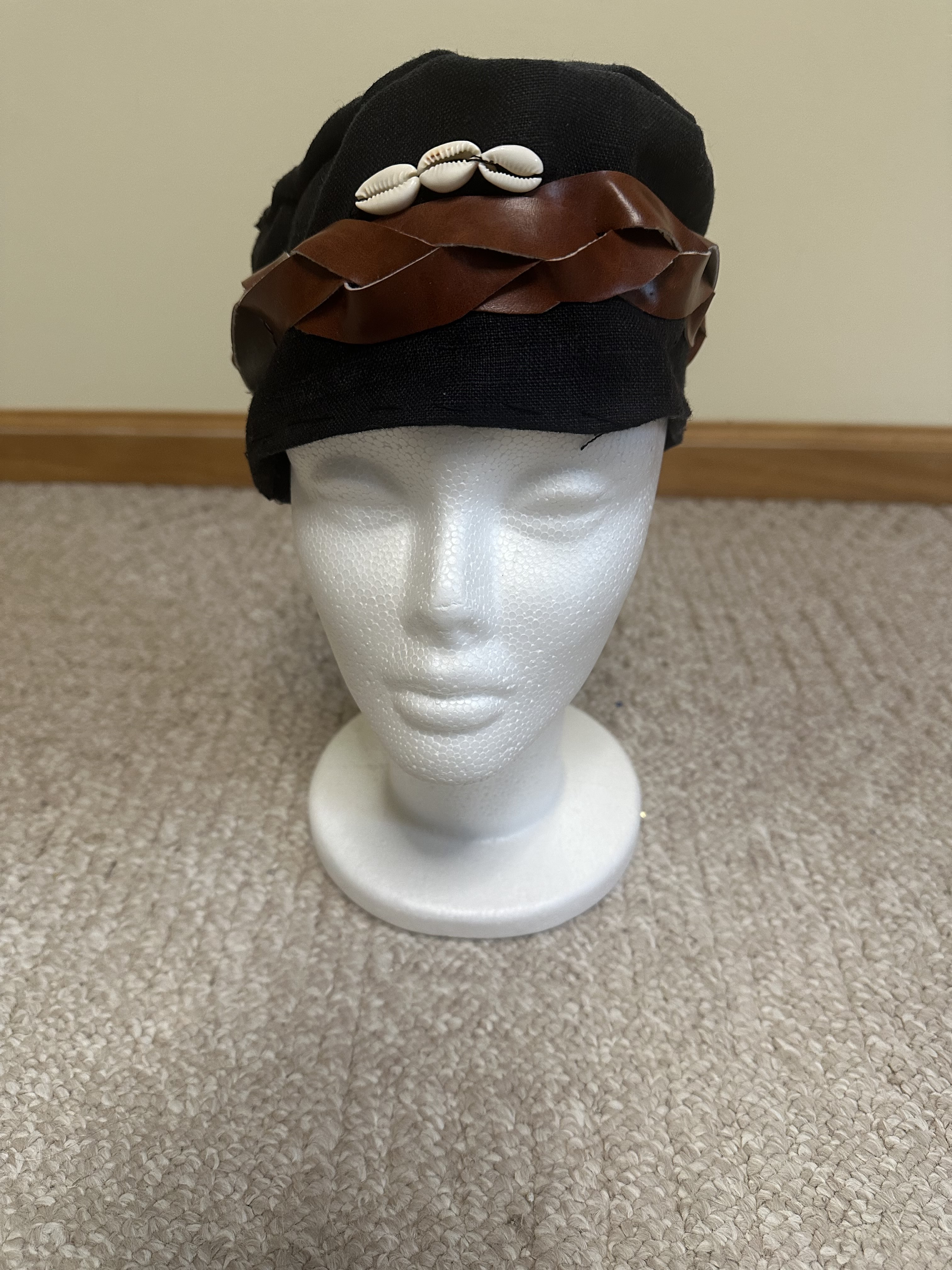My first attempt at some West African clothing
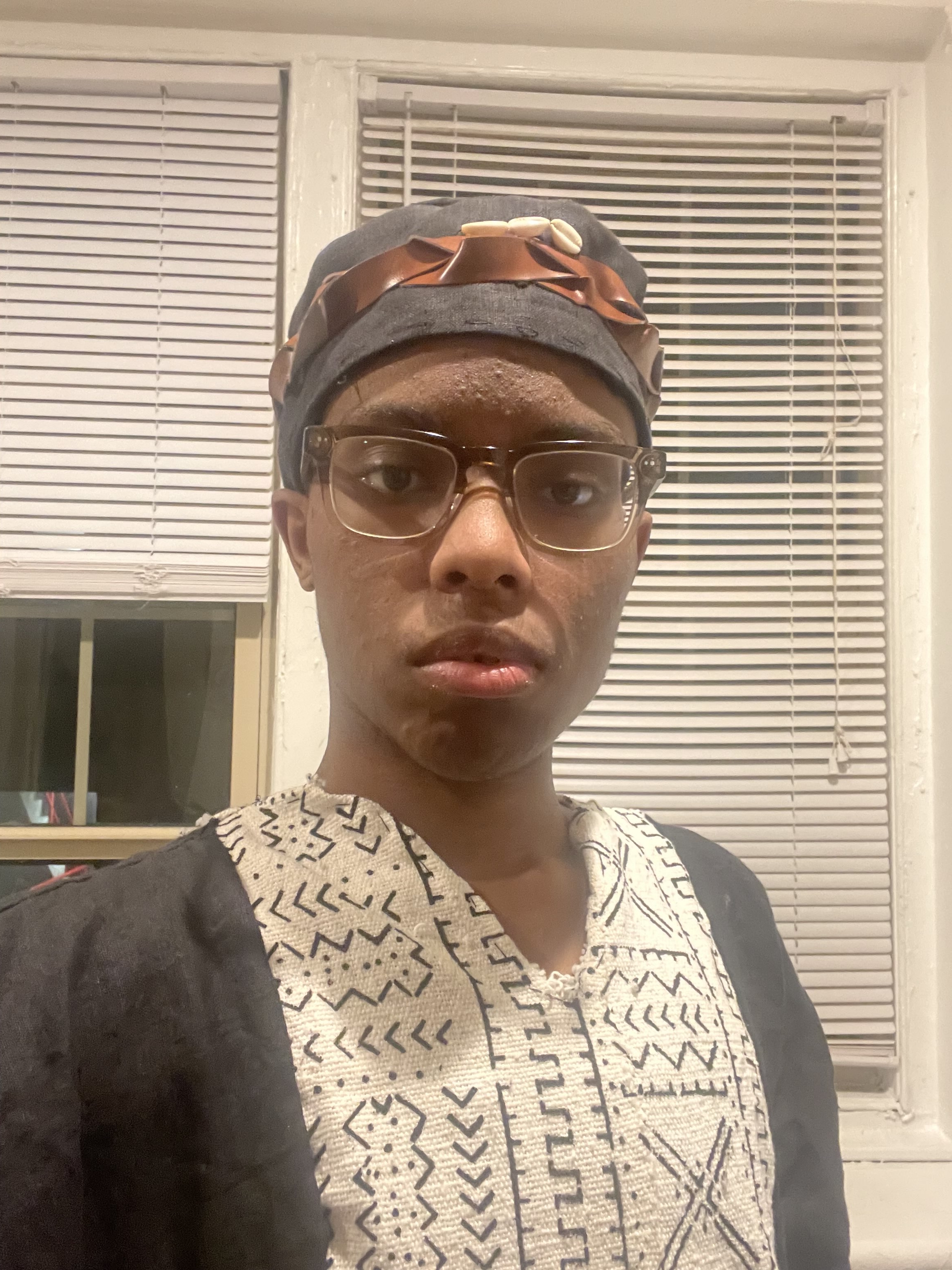
For a while, I’ve wanted to try my hand at making some West African clothing, but I wasn’t really sure where to start. There just aren’t as many resources for it as there are for European things.
And I’m also just chronically insecure, which in this case manifested as me not wanting to try for the longest time because I felt like the bar would be a lot higher since there aren’t that many people in the SCA doing West African things but in general, the A&S community has a lot of people with professional or academic experience related to history. I also worried about accidentally making something inaccurate or offensive, since there isn’t as much information, and African cultures are often appropriated. All of these things I still worry about, and the last concern is probably the most valid, but anyway, here are my attempts at making some medieval Mali clothing.
I googled a lot at first, to get an idea of what might’ve been worn. As for things that are still in use, these hunter’s tunics came up a lot. The other items the shirt is covered in are meant to be amulets to protect the hunter.
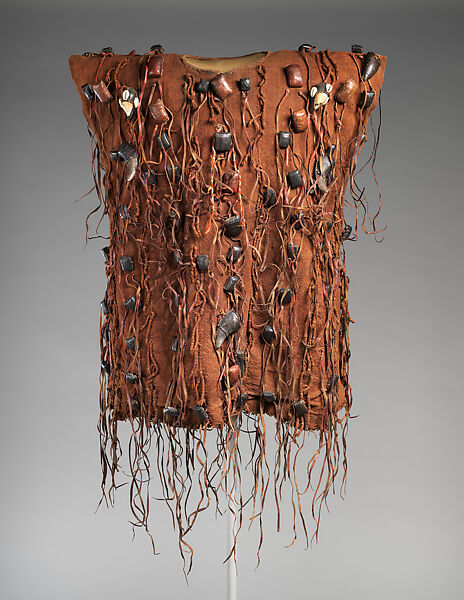
From the early 20th century. In The Met's collection.
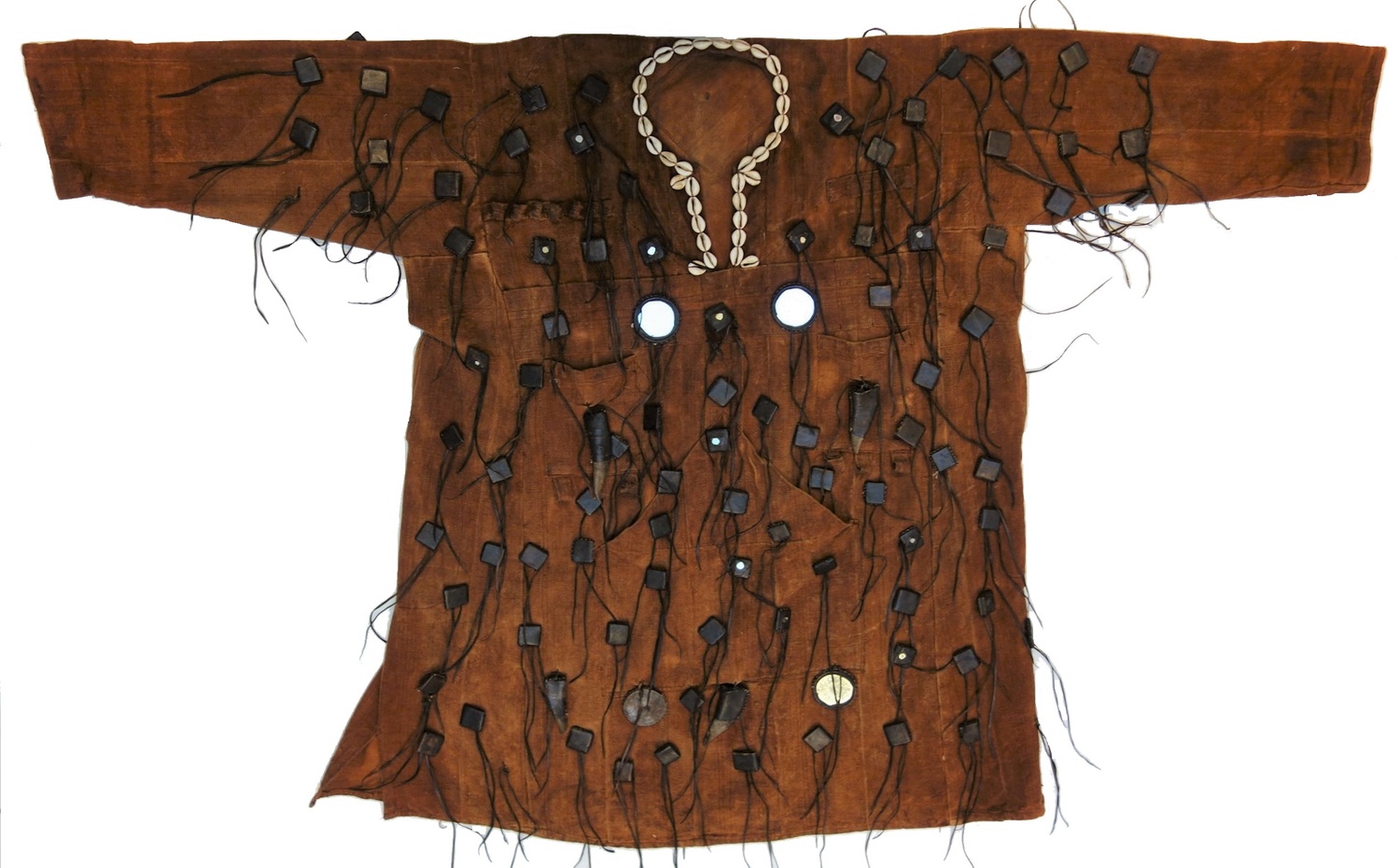
Late 20th century. From the Textile Research Center.
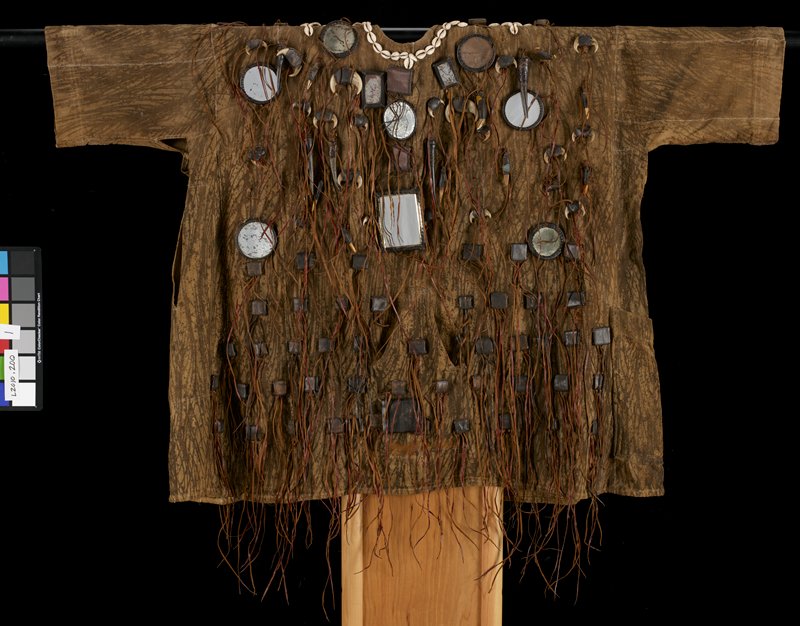
From the Minneapolis Institute of Art.
I also saw some actually period Malian clothing from museum collections, like these tunics.
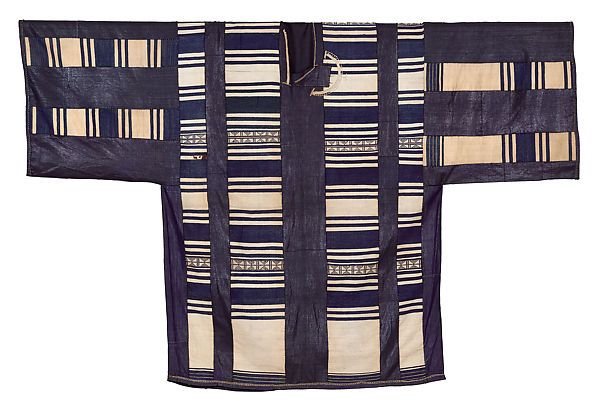
From some time before 1659. In the Met's Collection
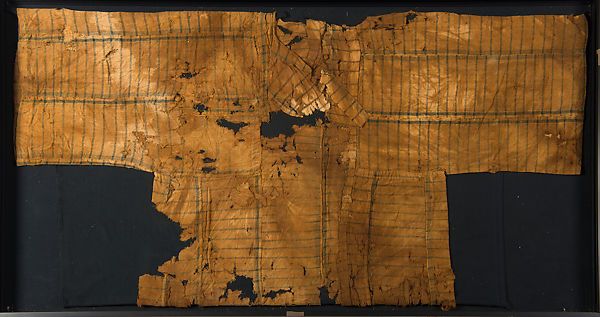
From the 15th or 16th century. Also in the Met's Collection
So far, it looks like mostly loose t tunics made out of mudcloth, which could be patterned or not, and sometimes decorated with cowrie shells and other items.
Then, someone in my barony checked out this book from a museum library called Tellem textiles: Archaeological finds from burial caves in Mali's Bandiagara Cliff, which had a lot of in depth information about traditional Malian clothes. I got her to scan some pages for me. Here, I found some patterns for gored tunics that had been used around the 14th and 15th centuries in Mali.
The one on the right was what I based my tunic off of.

I made a little mock up to get an idea of how it should look, then went to measuring out the pieces. Most of the measurements I came up were rough guesses, since this was obviously my first time making one of this kind of tunic, and I didn’t want to waste fabric and end up with something too small. So instead I ended up with something way too big, but that’s alright!

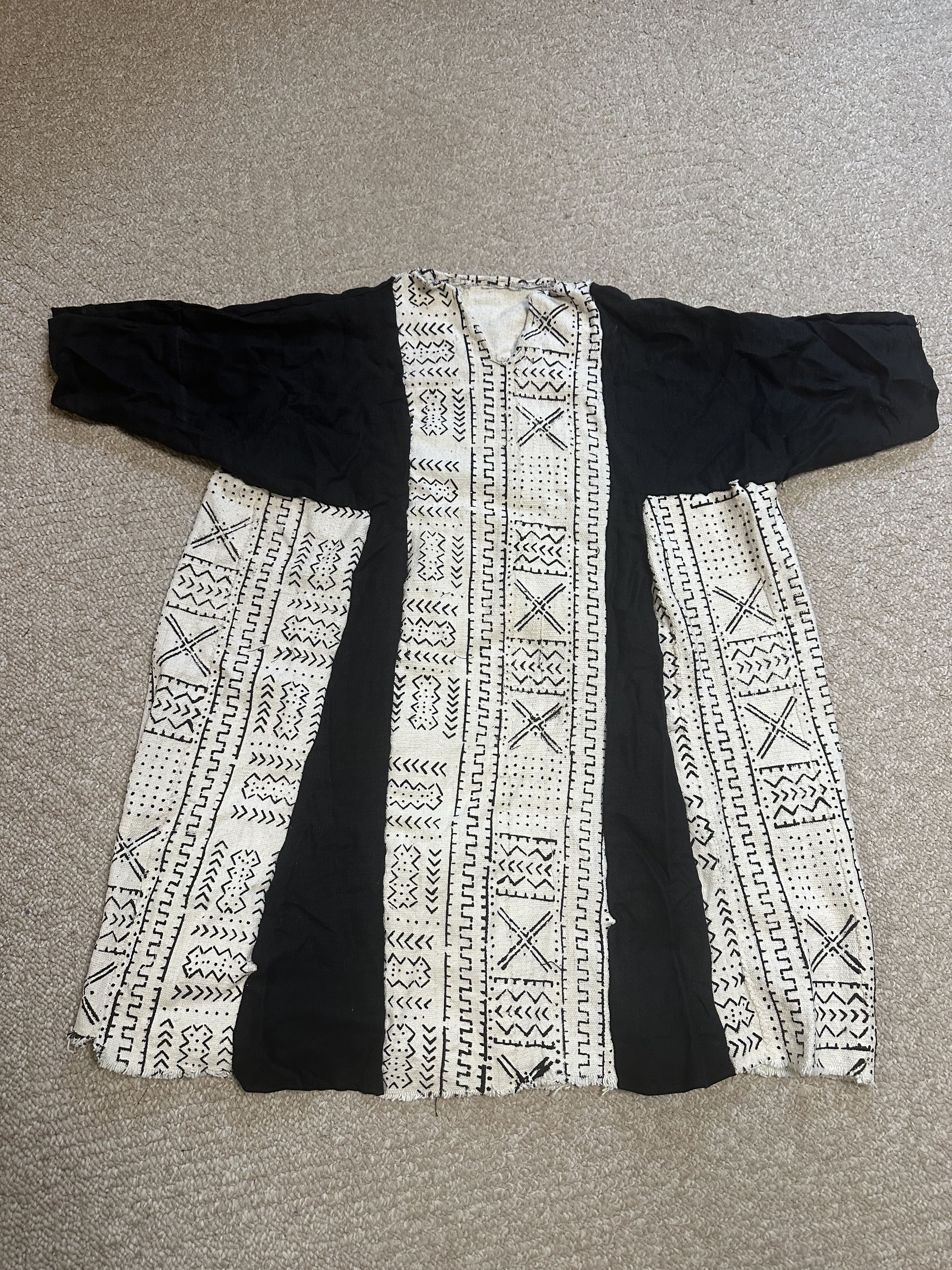
As for the hat, I got the idea of it from a modern image of people in Mali.
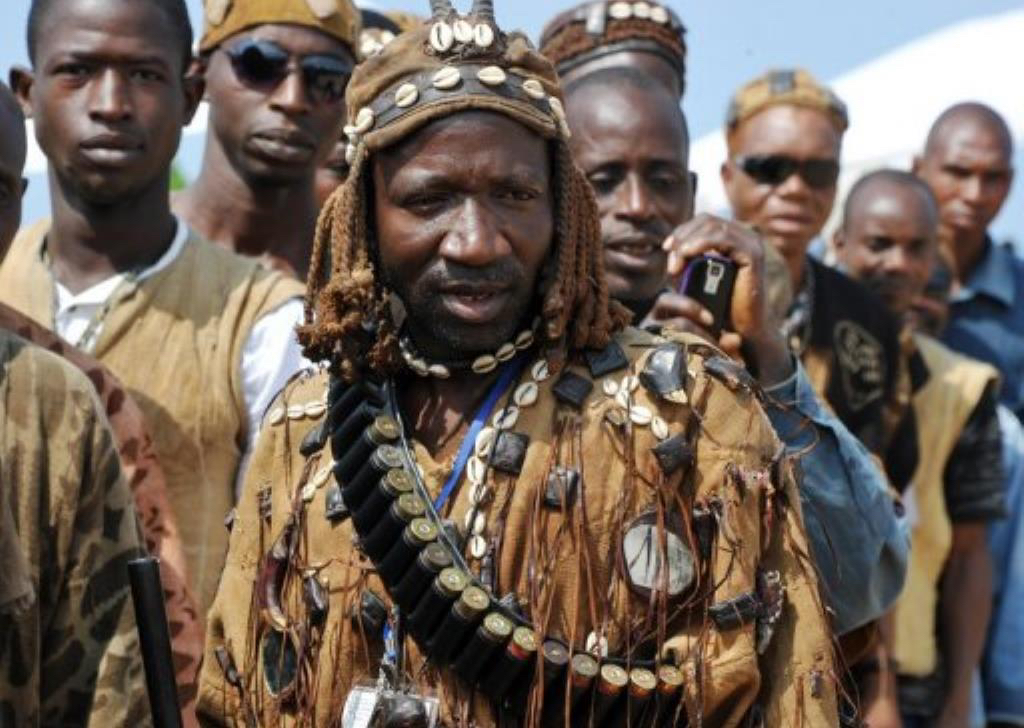
The hat seen to the right of the person in the middle is what I based mine off of. I figured it was a kufi hat, which would’ve been in medieval Mali as well.
